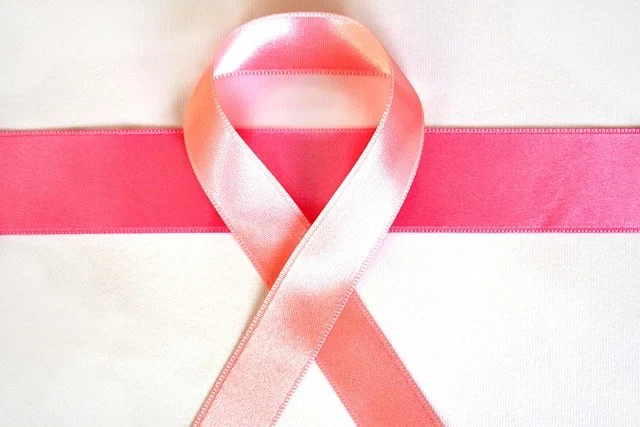Every year, breast cancer accounts for about 30-32% of all new cancer cases in U.S. women.
One size does not fit all with a cancer diagnosis, especially breast cancer. If you are diagnosed with breast cancer, you will receive what seems like a barrage of tests to determine the size, stage, and grade of the cancer, the type of breast cancer detected, and your general health.
There are common types of breast cancer and rare types.
Common Types of Breast Cancer:
· Non-Invasive ductal carcinoma in situ (DCIS)
· Invasive Ductal Carcinoma
· Triple Negative breast cancer
· HER2+ breast cancer
· Estrogen Receptor – positive breast cancer (positive for estrogen and/or progesterone)
Rare Types of Breast Cancer:
· Inflammatory breast cancer -
· Paget’s Disease of the breast – affects the nipple and areola
· Phyllodes tumor – a rare type that originates in the connective tissue.
Breast cancers can be categorized by location:
· Ductal carcinoma arises in the milk ducts.
· Lobular carcinoma develops in the lobules (milk-producing glands)
· Sarcoma occurs in the connective tissue of the breast.
By Invasiveness:
· Invasive breast cancer – spreads beyond the original site to other parts of the breast or body
· Non-invasive breast cancer – confined to the breast tissue
By Hormone Receptor Status:
· Estrogen receptor (ER+) cancer cells contain receptors for the hormone estrogen
· Progesterone receptor (PR+) cancer cells contain receptors for the hormone progesterone
· HER2+ - (human epidermal growth factor Receptor 2) expresses high levels of the HER2 protein normally found in breast tissues (25-30% of breast cancers). HER2+ is an aggressive type of breast cancer.
· Triple-negative – cancer cells test negative for HER2, ER, and PR – (15% of cases) are harder to treat because this type of cancer does not respond to established targeted therapies such as trastuzumab, pertuzumab, or tamoxifen available to treat the three main receptors in breast cancer. The prognosis for successful treatment is lower because of limited treatment options. Early diagnosis is the best weapon against this type of cancer.
Between 1980 and 2000, breast cancer incidences in the U.S. climbed then dropped in the early 2000s. Advances in screening and early diagnosis are saving lives, but the number of people diagnosed with breast cancer has continued to rise by 1% per year between 2012 and 2021. The highest increases were for women under 50 years old.
Why? Some physician theorize that causes for this increase could be linked to a decline in physical activity, an increase in alcohol consumption, or having fewer children. Other researchers are looking at environmental causes like pollution or exposure to harmful chemicals from plastics leaching into our bodies, the soil, and our water supply.
The median age for breast cancer diagnosis is 62 meaning 50% of the women diagnosed are under 62 year old and 50% are over 62.
Have we made strides in the fight against breast cancer? Yes, of course, but we have been unable to lower our total risk of developing breast cancer. One in eight women will still be diagnosed with breast cancer in her lifetime. One in one thousand men will still be diagnosed with breast cancer in his lifetime.
The good news is in the survival rates. With better screening and improved therapies, more women and men are surviving past the five year mark and beyond. As a cancer survivor, that’s huge. I’m committed to making sure funding remains intact for all cancer research because what researchers find out about one type of cancer or treatment can benefit multiple cancers.
When I was diagnosed with Invasive HER2+ breast cancer, my oncologist recommended the chemotherapy drugs Taxotere and carboplatin. Carboplatin was originally developed to treat ovarian cancer. At the time using carboplatin to treat breast cancer was relatively new. It’s now widely used to treat breast cancer, ovarian cancer, cervical cancer, endometrial cancers, lung cancer, testicular cancer, bladder cancer, brain tumors, and head and neck cancers. A cancer drug developed for one type of cancer is now being used to treat several cancers because researchers were able to study how it worked and research its effectiveness in the treatment of other cancers.
We have estimates for 2025 breast cancer statistics and the numbers are up from 2024 for diagnosis, but down for deaths. Breast cancer diagnoses for men remained the same, but 20 fewer men are predicted to die of breast cancer in 2025. This is largely thanks to earlier detection and treatment.
Estimated breast cancer statistics for 2025:
· Breast cancer is the most common cancer in women worldwide excluding skin cancer.
· Estimated new cases in women, 316,950 and in men, 2,800. There were 316,950 cases of invasive breast cancer and 59,080 new cases of ductal carcinoma in situ (DCIS) which is noninvasive.
· Less than 1% of all cases occur in men.
· Estimated deaths from breast cancer - 42,170 women and 510 men
· Lifetime risk is 1 in 8 for women and 1 in 1,000 for men
· Most common type: Invasive ductal carcinoma
· 5 year relative survival rate: overall is 91.7% with early stage detection and treatment this number rises to over 99%.
· An estimated 2.3 million new cases and 685,000 deaths globally are predicted for 2025.
· About 16% of women with breast cancer are younger than 50 years old.
· About 66% of breast cancer cases are diagnosed at a localized stage before the cancer has spread outside the breast when treatments tend to be more effective.
Female cancer incidence has been rising since the mid-2000s for cases of localized-stage and hormone receptor-positive disease.
Currently in the U.S., there are more than four million women with a history of breast cancer including women currently being treated and women who have completed treatment.
Guidelines have changed for diagnosing HER2+ breast cancer because researchers have discovered that amounts of the hormone previously classified as negative for HER2+ breast cancer should be considered low HER+ and patients with low HER2+ can benefit from treatment with the monoclonal antibodies trastuzumab or pertuzumab in additional to chemotherapy.
My numbers were in the upper range for HER2+ breast cancer, so I was given Herceptin (trastuzumab) which destroys the body’s ability to produce the HER2 protein. Other proteins assume its job, so not producing the protein isn’t detrimental to your health. A close friend tested lower (using two different testing measures) and was considered negative for HER2+, but when she experienced a recurrence her numbers were high for HER2+. If she had received Herceptin at the time of her original diagnosis, she might be alive today. Unfortunately, cancer treatments aren’t absolute. Drugs have side effects and oncologists are careful not to expose their patients to the side effects of drugs that may not help them. Researchers learn and re-evaluate as more information becomes available. Treatment protocols change and that’s why funding research is so important. Physicians need to make sure any drug they prescribe will do more good than harm.
Black women have a 5% lower risk of developing breast cancer than white women, but a 38% higher chance of death from breast cancer. Black women are more likely to die from breast cancer than any other racial or ethnic group. These figures reflect the disparity in healthcare between many communities that are predominantly White or Black. Black women are also more likely to develop triple negative breast cancers.
Death rates for Indian/Alaska Natives have remained constant despite declining death rates for every other racial or ethnic groups. Indian/Alaska Native women have a 10% lower incidence of developing breast cancer than white women, but a 6% higher chance of dying.
Ashkenazi Jewish women have a higher risk of breast cancer because of a higher rate of BRCA mutations.
Black men have the highest incidence of male breast cancer and death.
Breast cancer risk factors:
1, Having breasts
2. Being a woman
3. Getting older
4. Having a first degree relative -mother, sister, or daughter who has or had breast cancer.
5. Possibly factors such as exposure to environmental pollution, smoking, secondhand smoke, consuming alcohol, sedentary lifestyle, obesity, and poor diet – these factors could up your risk of developing breast cancer, but even if they don’t these things will play a part in how well you tolerate treatment.
Trans or non-binary women need to discuss their individual cancer risks with their physicians.
A women’s cancer risk nearly doubles if they have a first degree relative (mother, sister, or daughter) who has been diagnosed with breast cancer.
About 15% of women who get breast cancer have a family history of breast cancer. Eighty-five percent have no family history of breast cancer. Over time, healthy breast cells can develop mutations on their own, eventually turning into cancer cells.
Five to ten percent of breast cancers can be linked to gene mutations inherited from a mother or father. Mutations in the BRCA1 and BRCA2 genes are the most common.
A BRCA1 mutation puts your lifetime breast cancer risk at 72%. For BRCA2 the lifetime risk is 68%.
In men BRCA2 is the most common gene mutation at 6.8% lifetime risk.
Environment and lifestyle may play a huge part in your breast cancer risk, but you can do everything right and still get breast cancer. Information is your best weapon. Misinformation is dangerous and scary. Your physician, the American Medical Association and the American Cancer Society are your best resources for accurate information about healthy lifestyles, cancer risks, or any medical questions.
Breast cancer myths:
1. No family history means I won’t get breast cancer. False - As I mentioned earlier only 15% of people diagnosed with breast cancer have a family history of breast cancer.
2. If you maintain a healthy weight and healthy lifestyle you won’t get breast cancer. False -Anyone with breast tissue can get breast cancer. Being in good health will help you better tolerate treatments and help your recovery. A positive body image during and after treatment is also beneficial to your emotional health and well-being.
3. Wearing a bra causes breast cancer. False - There are no definitive studies to support this claim.
4. Not wearing a bra causes breast cancer. False - There are no definitive studies to support this claim.
5. Using under arm antiperspirant can cause breast cancer. False - While some women who use antiperspirants with aluminum can have a higher than normal concentration of aluminum in their breast tissue, but there’s no strong evidence linking this to an increased cancer risk.
6. Carrying your cell phone in your bra can cause breast cancer. False - Ick, but no link has been discovered that would suggest it causes cancer. However, cell phone companies recommend that you keep your device away from your body as much as possible.
7. Consuming too much sugar causes breast cancer. False - While cancer cells consume sugar more quickly than normal cells there is no conclusive evidence that excessive sugar consumption causes cancer. Too much sugar isn’t healthy for anyone, so while cutting back on sugar won’t prevent breast cancer, it can protect you from developing other medical conditions that might impact your ability to better tolerate breast cancer treatments.
8. Annual mammograms guarantee that breast cancer is always found early. False -Mammograms are the best tools for early detection of breast cancer, but it doesn’t always find breast cancer at an early stage. False negative results are more common in women with dense breast tissue. Younger women are more likely to have dense breast tissue. The error rate can be as high as 20% for very early stage cancers. Additional ultrasound testing may be necessary.
9. Breast cancer always produces a lump you can feel. False - Breast cancer in early stages may not cause a lump. Some forms of breast cancer don’t cause lumps.
10. Early-stage breast cancer rarely recurs. False - There’s always a risk of a recurrence.
11. Breast cancer treatments are the same for every diagnosis. False - While there is a standard of care for breast cancer each treatment plan is tailored to each individual case depending on the size, stage, and grade of the cancer, the type of breast cancer detected, and the health and personal preferences of the patient.
12. Breast Cancer only happens to women who are middle aged or older. False – We are all born with breast tissue, so unfortunately the risk is always there. It is typically lower for young people, and increases as we age. However, young women tend to have dense breast tissue which makes accurate imaging more difficult.
13. The effects of breast cancer are over once you successfully complete treatment. False -The physical and psychological effects of breast cancer will be with you for the rest of your life.
14. Researchers know everything they need to know about breast cancer and survival rates are high, so it’s no big deal. False – Women and men are still dying from breast cancer and recurrences of breast cancer. Research which yields new treatments, better screening techniques, and accessibility to screening and treatment save lives and must never be taken for granted.
One final thought about breast cancer. Breast cancer research results, early detection, and treatments are only effective if people have access to and can afford them. Higher insurance premiums and deductibles, reinstating exclusions for pre-existing conditions, cuts to Medicaid and Medicare will cost lives. If rural hospitals are forced to close, cancer screenings and cancer care will become less affordable and more difficult to access for rural populations.
Mothers, daughters, grandmothers, sisters, fathers, sons, brothers, and grandfathers will die from a cancer with a 5 year relative survival rate of 91.7% overall and a 99% five year survival rate with early stage detection and treatment. That’s totally unacceptable. Please make sure our leaders in Washington D.C. don’t eradicate all the progress we’ve made in the fight against breast cancer and other diseases. Support the fight to make healthcare a human right.
Sources:








